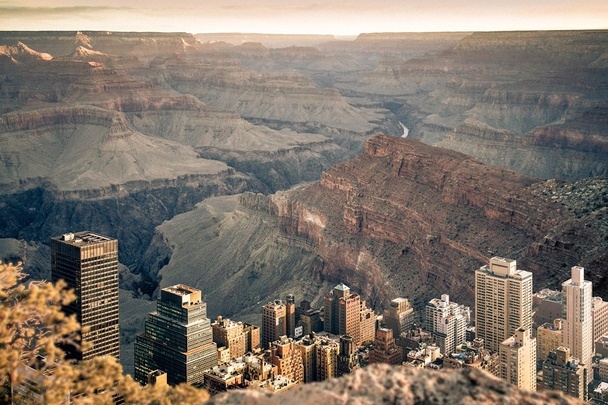So What Exactly Is a 'Road Diet'? - CityLab
Geege Schuman stashed this in Cities
Stashed in: Data Mindset
The concept of road diets emerged as a response to a common practice of expanding two-lane urban arterials into four lanes once vehicular traffic hit a certain point—roughly 6,000 cars a day by some estimates. The original thinking held that wider roads meant better traffic flows, especially at rush-hour, but new lanes also attracted new traffic, and outside the peak periods you'd end up with lots of wasted road space. An analysis of road widening in the small city of Fort Madison, Iowa, showed an increase in traffic volumes, but also delay, speed, and crash and injury rates:
 Welch (1999), TRB Circular E-C019Realizing these unintended outcomes, some localities implemented a type of road diet: reconfiguring the four lanes (two in each direction) into three (one each way plus a shared turn lane in the middle). The change dramatically reduced the number of "conflict points" on the road—places where a crash might occur. Whereas there might be six mid-block conflict points in a common four-lane arterial, between cars turning and merging, there were only two after the road diet:
Welch (1999), TRB Circular E-C019Realizing these unintended outcomes, some localities implemented a type of road diet: reconfiguring the four lanes (two in each direction) into three (one each way plus a shared turn lane in the middle). The change dramatically reduced the number of "conflict points" on the road—places where a crash might occur. Whereas there might be six mid-block conflict points in a common four-lane arterial, between cars turning and merging, there were only two after the road diet:
 Iowa Department of Transportation (2001)Likewise, at an intersection, eight potential conflict points became four after a road diet:
Iowa Department of Transportation (2001)Likewise, at an intersection, eight potential conflict points became four after a road diet:
 Iowa Department of Transportation (2001)The result was a much safer road. In small urban areas (say, populations around 17,000, with traffic volumes up to 12,000 cars a day), post-road diet crashes dropped about 47 percent. In larger metros (with populations around 269,000 and up to 24,000 daily cars), the crash reduction was roughly 19 percent. The combined estimate from all the best studies predicted that accidents would decline 29 percent, on average, after a four-to-three-lane road diet—DOT's reported figure.
Iowa Department of Transportation (2001)The result was a much safer road. In small urban areas (say, populations around 17,000, with traffic volumes up to 12,000 cars a day), post-road diet crashes dropped about 47 percent. In larger metros (with populations around 269,000 and up to 24,000 daily cars), the crash reduction was roughly 19 percent. The combined estimate from all the best studies predicted that accidents would decline 29 percent, on average, after a four-to-three-lane road diet—DOT's reported figure.
These benefits alone would be enough to merit more road diets, but there were plenty of others. Bicycle and pedestrian traffic tends to soar at these sites, as the recaptured road space gives way to bike lanes or street parking that provides a sidewalk buffer from moving traffic or crossing islands, and as vehicle speeds decline (especially for high-end speeders going more than 5 miles per hour over the limit). Traffic volumes, meanwhile, typically stay even in such a corridor: some drivers diverted to other parts of the street network, while the rest quickly soak up any vacated space.
So what does that mean for Southern California's 16-lane megahighways? I can guess the answer:
1) Smaller highways
2) More pissed off people whose houses are illegally taken over by emminent domain
3) Governments not willing to pay the overmarket prices to do the right thing
4) Poor planning.
Situation Normal. All FU.
They should remain as a cautionary tale.











10:22 AM Sep 12 2014